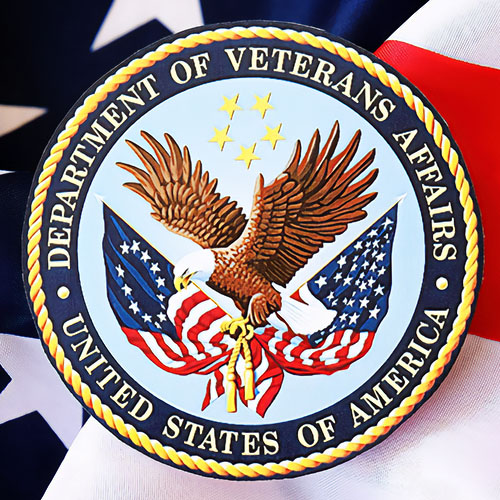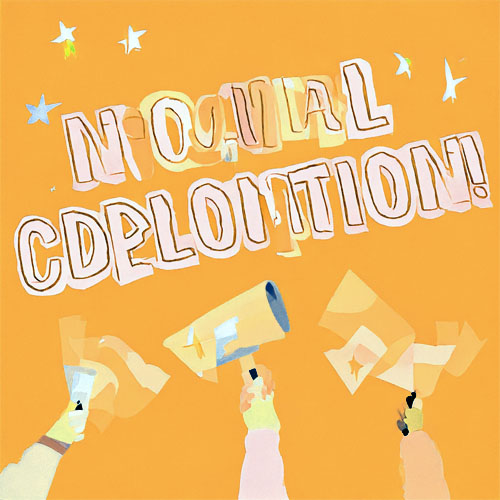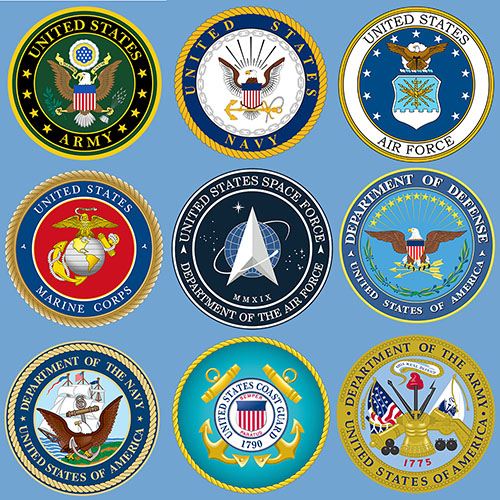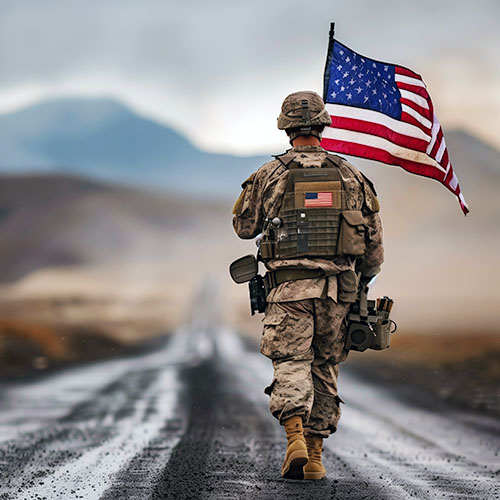Firearms are responsible for thousands of veteran suicides — but new initiatives aim to prevent more tragedies.
A Deadly Crisis of Suicide
Jason Zimmerman was born and raised in a rural Tennessee town with a strong hunting culture. He got his first firearm — a BB gun — from his parents at age seven. On his 12th birthday, his grandfather gifted him a shotgun and enlisted him in firearm safety courses.
“In my childhood, I saw firearms as a tool to help you sustain your family, put food on the table, get you through the lean times,” he said.
After Zimmerman enlisted as an Army medic in the late ’90s, guns took on another purpose: “My firearm was a tool. It just served a different function: to keep me, and the guys to my left and right, safe.”
His service featured tough deployments to Bosnia, Honduras and Iraq.
Now a civilian, Zimmerman today owns 17 firearms, including an AR-15, an AK-47, and seven pistols. While he once thought his guns would provide a sense of comfort post-service, his relationship to them has fundamentally changed.
The trouble started after returning home, when Zimmerman started showing symptoms of PTSD and depression. After bagging and dressing his first post-deployment buck, he felt a flashback to the battlefield and had to stop.
“In all honesty, having my hands in that much blood again was too much,” he said. “I couldn’t do it.”
Zimmerman reached a crisis point in February 2012, when his best friend from the 82nd Airborne Division, who’d saved his life in combat, killed himself. Zimmerman had spent hours on the phone with his buddy during his mental health crisis. He hung up thinking a calamity was averted, only to wake the next morning to news of his pal’s death. After this, Zimmerman became depressed, withdrawn and decided he, too, would shoot himself on the one-year anniversary of his friend’s suicide.
Fortunately, soon afterward he reconnected with a former schoolmate who saved his life. The two fell in love, got married and had kids. Zimmerman still struggles with PTSD and depression, and he hasn’t been hunting in years. He enjoys shooting guns at a firing range with veteran buddies, but he can no longer escape the truth of their lethality. Their outsize role in American violence was made even clearer to Zimmerman when a series of violent threats at his daughter’s high school repeatedly forced her and her classmates into lockdown.
“During the most recent threat, I drove into the grocery store parking across the street from her school,” he said. “I texted her, ‘It’s OK, peanut. I’m here. If something terrible happens, I’m here.’”
A few years ago, Zimmerman took a job at Johnson City’s Tennessee Veterans Affairs Medical Center. Specifically, he serves in a counseling role created through a suicide prevention law named after Clay Hunt, a vet who took his life with a gun. Zimmerman’s innovative work on safe storage of firearms among veterans led to his being tapped as a core member of former President Donald Trump’s veteran suicide prevention lethal means task force. The initiative broke significant political ground by affirming, in part, that “effective suicide prevention is voluntary reduction in the ability to access lethal means with respect to time, distance and convenience.”
For decades, public health researchers have endeavored to understand America’s complex relationship with firearms, given their use for hunting and home protection, yet also being the most common means used in the unyielding suicide crisis. Within the firearm community that last topic was a third rail, facing seemingly insurmountable resistance from the National Rifle Association (NRA), which insisted “the use of firearms in suicide is not relevant.”
But in the last dozen years, a growing constellation of Second Amendment advocates who experienced the pain of losing someone close to a firearm suicide have successfully countered this position — that not only is there a connection between access and suicide, but that much can be done to address it head-on.
This network includes Zimmerman, but also Ralph Demicco, a New Hampshire gun shop owner, who launched the national Gun Shop Project after three customers in a week died by suicide within hours of purchase; Joe Bartozzi, president of the National Shooting Sports Foundation (NSSF), who endured a close colleague’s suicide and has co-branded strategic initiatives with the American Foundation for Suicide Prevention; Steve Eliason, a Republican Utah lawmaker, who authored pioneering gun safety legislation after three children at his son’s middle school died by suicide; Alan Gottlieb, founder of the Second Amendment Foundation, along with Brett Bass, a retired Marine who lost a number of battle buddies to suicide, and Jennifer Stuber, whose husband, Matt, shot and killed himself, and who effectively lobbied the Washington State legislature for wide-ranging firearm suicide prevention programs.
These and other Second Amendment advocates have built projects that are inexorably altering the firearm suicide prevention landscape. Perhaps the most compelling demonstration that a sea change is occurring within the firearm community came in a 2022 firearm suicide prevention summit, whose attendees included the U.S. Concealed Carry Association and gun manufacturers Smith & Wesson and Glock Inc. The meeting was convened by Dr. Matthew Miller, the director of the Department of Veterans Affairs’ Suicide Prevention Program, a veteran and avid gun collector, who lost his best friend to suicide during his last year in the Air Force.
Previous federal work on this issue has been hamstrung by inaction and ineffective policies. In numerous instances, promising programs have been shuttered or scaled back due to political pressure. At times, the VA has also restricted gun rights for veterans carrying dishonorable discharge classifications or evidence of poor financial decision-making. (These poorly conceived and articulated policies resulted in a years-long, highly effective offensive against the VA from the NRA and other firearm lobbyists.)
New and ongoing initiatives have been far more successful. VA leaders and their allies, for instance, quietly forged partnerships with major gun groups and firearms figures, including the National Shooting Sports Foundation, sport shooter Chris Cheng, and, in one case, a state chapter of the NRA. In 2018, the VA held the first of its kind innovation challenge for safe firearm storage, which led to the production of numerous design innovations now being developed and produced.
Advocates are also looking to pioneering projects in other countries. After Switzerland greatly reduced the size of its military in the early ’00s, for instance, the number of households with guns shrank, as did the suicide rate among men. In 2006, the Israeli Defense Forces banned soldiers from taking guns home on weekends, and the suicide rate among young men decreased by 40 percent.
Zimmerman routinely sees the tragic effects of America’s unparalleled suicide crisis and hopes this new movement can make change.
“It’s hard not to shake a tree these days and find someone not impacted by suicide or gun violence,” he said. “That really bothers me.”
Read more of Jasper Craven’s work at battleborne.substack.com.



















